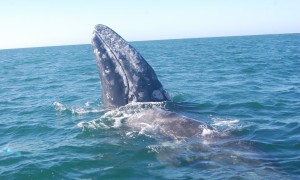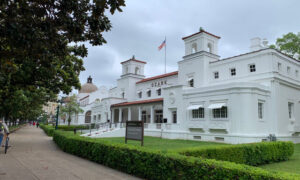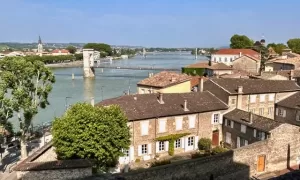By Sheryl A. Jurries, Guest blogger
If you’ve been following DesignDestinations.org then you know that I enjoyed a wonderful trip to Scotland last summer and have been posting as a guest blogger about it. I hope you are enjoying the guest blog posts.
If you haven’t traveled to Scotland, you may still be familiar with the Highlands and the vastly gorgeous landscapes of Scotland from watching many TV shows filmed here, including “Outlander.” This country certainly has some of the most beautiful scenery in the world. The editors of National Geographic also think so, as they named Scotland one of the “Best of the World“ destinations in 2023.
This post is going to highlight a couple of castles. So much history.
Falkland Palace
The royal palace of Scottish Kings, here’s Falkland Palace. Mary, Queen of Scots, took refuge here from religious and political strife. It was her favorite hunting lodge. It is also home to the Falkland Palace Royal Tennis Club, built for James V in 1541. It’s the oldest tennis court in use today.
Eilean Donan
Eilean Donan is one of the most recognized castles in the world. It’s on a small tidal island where 3 lochs converge. It was constructed and rebuilt at least 4 times. It is Scotland‘s 3rd most-visited castle and the most recognizable. It’s been the movie set for films like James Bond’s “The World Is Not Enough.” It was also featured in “Highlander,” and it’s the only location filmed in Scotland for the “Game of Thrones” TV series.
This window looks out on the oldest part of the castle, built in the 1300s.
Dunrobin Castle
If you can get a chance to tour Dunrobin Castle, do it. It was built in the early 1300s but completely remodeled in 1835. It is the residence of the 25th Earl of Sutherland. You can’t stay here, but you can stay at the Porter’s Lodge, which is at the end of the castle’s drive.
This castle contains a staggering 189 rooms. It’s one of Britain’s oldest continuously inhabited houses. It was a boys’ boarding school from 1965 to 1972.
We had a lovely tour and let me share a few of the spaces with you.
There were two beds here in the Night Nursery. The furniture is beautiful and it was all painted Sicilian wood. I thought it was a really charming room for little ones.
A lot of these clothes were worn to very important occasions, such as coronations. They are found in the Seamstress’s Room. This room is also known as the Haunted Room. That tale stems from the 15th century in which a beautiful young woman was locked up in the haunted room after she refused to marry the Earl of Sutherland. She tried to escape using a sheet of ropes, and the Earl was so enraged, he cut the rope and she fell to her death at the foot of the tower. Some say she can still be heard weeping and wailing.
Well, I always have been keenly interested in fancy place settings and tablescapes. When I was 12 and in home economics class, our teacher, Mrs. Annettie Tribbett, told us of a competition that involved our drawing an elaborate tabletop showing how we would set our tables. I had so much fun drawing the plates, cups, saucers, silverware, napkins, and doodads. I remember I spent hours playing with the design. I think I was probably a kitchen maid in my former life, forced to lay the tables of castle owners.
Queen Victoria slept here in the Green and Gold room.
The children’s nursery was especially fantastic. This was part of the day nursery. This model of a ‘Zulu’ class fishing boat was made by a local fisherman sometime before 1921.
The children who lived here and their visitors would spend hours in day nursery with their nannies, nursery maids, and even governesses. I can see why these children loved it. Heck, I would love to hang out there!
The gardens are fantastic.
Campbell’s of Beauty produces these marvelous tweeds, which are used by the employees of very fine Scottish estates. Each estate has its own tweed. These tweeds cannot be purchased by anyone except the estate owner that it was made for. I would have loved to purchase several yards to have some vests made for Jim.
I thought this was very interesting. It’s called Plaiden Ell. It’s an ancient measurement for measuring cloths in fairs and markets held on this site since medieval times. Several countries had different sizes of Ell. The Scottish Ell was standardized in 1661 to 37 inches, marked by metal spikes at each end. The tailor would lay a span of cloth along the edges and between the spikes to measure the length so he could charge appropriately. There are only two other Ells known to have survived. This one is located in the graveyard at Dornoch Cathedral.
Sheryl Arredondo Jurries is a former magazine editor and newspaper reporter. She has 2 children, 2 stepchildren, and a granddaughter. She had her husband Jim reside in Holland, Michigan.






















Comments
2 CommentsMarie
Oct 24, 2024A lovely reflection, with great images, on the remarkable ancient history of Scotland!
Sheryl
Nov 2, 2024Thank you Marie!